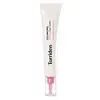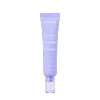What's inside
What's inside
 Key Ingredients
Key Ingredients

 Benefits
Benefits

 Concerns
Concerns

 Ingredients Side-by-side
Ingredients Side-by-side

Water
Skin ConditioningGlycerin
HumectantButylene Glycol
HumectantCollagen Extract
Skin ConditioningCaprylic/Capric Triglyceride
MaskingDipropylene Glycol
HumectantCetearyl Alcohol
EmollientNiacinamide
Smoothing1,2-Hexanediol
Skin ConditioningCetearyl Olivate
Glyceryl Stearate
EmollientSorbitan Olivate
EmulsifyingSoluble Collagen
HumectantCollagen Amino Acids
MoisturisingHexapeptide-2
BleachingAllantoin
Skin ConditioningPanthenol
Skin ConditioningSodium Hyaluronate
HumectantSodium Hyaluronate Crosspolymer
HumectantPotassium Hyaluronate
Skin ConditioningHydrolyzed Hyaluronic Acid
HumectantHyaluronic Acid
HumectantHydroxypropyltrimonium Hyaluronate
Sodium Acetylated Hyaluronate
HumectantC10-18 Triglycerides
EmollientHydrogenated Poly(C6-14 Olefin)
EmollientPolyglyceryl-6 Distearate
EmulsifyingHeptyl Undecylenate
EmollientArachis Hypogaea Oil
Skin ConditioningAdenosine
Skin ConditioningRetinol
Skin ConditioningRetinyl Palmitate
Skin ConditioningRetinal
Skin ConditioningHydroxypinacolone Retinoate
Skin ConditioningCetyl Palmitate
EmollientCandelilla/Jojoba/Rice Bran Polyglyceryl-3 Esters
EmulsifyingButyloctyl Palmitate
EmollientVinyldimethicone
Carbomer
Emulsion StabilisingAcrylates/C10-30 Alkyl Acrylate Crosspolymer
Emulsion StabilisingTromethamine
BufferingEthylhexylglycerin
Skin ConditioningGlyceryl Acrylate/Acrylic Acid Copolymer
Humectant2,3-Butanediol
HumectantPvm/Ma Copolymer
Emulsion StabilisingDisodium EDTA
Propanediol
SolventPolyglyceryl-4 Oleate
EmulsifyingSodium Stearoyl Glutamate
CleansingDimethyl Isosorbide
SolventPentylene Glycol
Skin ConditioningXanthan Gum
EmulsifyingBiotin
AntiseborrhoeicTocopherol
AntioxidantWater, Glycerin, Butylene Glycol, Collagen Extract, Caprylic/Capric Triglyceride, Dipropylene Glycol, Cetearyl Alcohol, Niacinamide, 1,2-Hexanediol, Cetearyl Olivate, Glyceryl Stearate, Sorbitan Olivate, Soluble Collagen, Collagen Amino Acids, Hexapeptide-2, Allantoin, Panthenol, Sodium Hyaluronate, Sodium Hyaluronate Crosspolymer, Potassium Hyaluronate, Hydrolyzed Hyaluronic Acid, Hyaluronic Acid, Hydroxypropyltrimonium Hyaluronate, Sodium Acetylated Hyaluronate, C10-18 Triglycerides, Hydrogenated Poly(C6-14 Olefin), Polyglyceryl-6 Distearate, Heptyl Undecylenate, Arachis Hypogaea Oil, Adenosine, Retinol, Retinyl Palmitate, Retinal, Hydroxypinacolone Retinoate, Cetyl Palmitate, Candelilla/Jojoba/Rice Bran Polyglyceryl-3 Esters, Butyloctyl Palmitate, Vinyldimethicone, Carbomer, Acrylates/C10-30 Alkyl Acrylate Crosspolymer, Tromethamine, Ethylhexylglycerin, Glyceryl Acrylate/Acrylic Acid Copolymer, 2,3-Butanediol, Pvm/Ma Copolymer, Disodium EDTA, Propanediol, Polyglyceryl-4 Oleate, Sodium Stearoyl Glutamate, Dimethyl Isosorbide, Pentylene Glycol, Xanthan Gum, Biotin, Tocopherol
Water
Skin ConditioningGlycerin
HumectantHydrogenated Polydecene
EmollientButylene Glycol
HumectantEthylhexyl Palmitate
EmollientCyclopentasiloxane
EmollientCetearyl Alcohol
EmollientPolyglyceryl-3 Methylglucose Distearate
EmulsifyingNiacinamide
SmoothingButyrospermum Parkii Butter
Skin ConditioningCyclohexasiloxane
EmollientCasein
Skin ConditioningDipentaerythrityl Hexa C5-9 Acid Esters
Skin ConditioningDimethicone/Vinyl Dimethicone Crosspolymer
Skin ConditioningGlyceryl Stearate Se
EmulsifyingCetearyl Olivate
Macadamia Ternifolia Seed Oil
EmollientHydrolyzed Collagen
EmollientSorbitan Olivate
EmulsifyingBeeswax
Emulsion StabilisingDimethicone
EmollientPolyacrylate-13
Polyisobutene
Polysorbate 20
EmulsifyingSorbitan Isostearate
EmulsifyingDimethiconol
EmollientSorbitan Sesquioleate
EmulsifyingAdenosine
Skin ConditioningCopper Tripeptide-1
Skin ConditioningAcetyl Hexapeptide-8
HumectantPalmitoyl Tripeptide-1
Skin ConditioningPalmitoyl Tetrapeptide-7
Skin ConditioningPropolis Extract
Skin ConditioningCeramide NP
Skin ConditioningHydrogenated Lecithin
EmulsifyingCentella Asiatica Extract
CleansingSteareth-20
CleansingChrysin
Skin ConditioningN-Hydroxysuccinimide
Skin ConditioningSqualane
EmollientXanthan Gum
EmulsifyingIllicium Verum Fruit Extract
PerfumingCitric Acid
BufferingDisodium EDTA
Caprylyl Glycol
EmollientEthylhexylglycerin
Skin Conditioning1,2-Hexanediol
Skin ConditioningParfum
MaskingWater, Glycerin, Hydrogenated Polydecene, Butylene Glycol, Ethylhexyl Palmitate, Cyclopentasiloxane, Cetearyl Alcohol, Polyglyceryl-3 Methylglucose Distearate, Niacinamide, Butyrospermum Parkii Butter, Cyclohexasiloxane, Casein, Dipentaerythrityl Hexa C5-9 Acid Esters, Dimethicone/Vinyl Dimethicone Crosspolymer, Glyceryl Stearate Se, Cetearyl Olivate, Macadamia Ternifolia Seed Oil, Hydrolyzed Collagen, Sorbitan Olivate, Beeswax, Dimethicone, Polyacrylate-13, Polyisobutene, Polysorbate 20, Sorbitan Isostearate, Dimethiconol, Sorbitan Sesquioleate, Adenosine, Copper Tripeptide-1, Acetyl Hexapeptide-8, Palmitoyl Tripeptide-1, Palmitoyl Tetrapeptide-7, Propolis Extract, Ceramide NP, Hydrogenated Lecithin, Centella Asiatica Extract, Steareth-20, Chrysin, N-Hydroxysuccinimide, Squalane, Xanthan Gum, Illicium Verum Fruit Extract, Citric Acid, Disodium EDTA, Caprylyl Glycol, Ethylhexylglycerin, 1,2-Hexanediol, Parfum
 Reviews
Reviews

Ingredients Explained
These ingredients are found in both products.
Ingredients higher up in an ingredient list are typically present in a larger amount.
1,2-Hexanediol is a synthetic liquid and another multi-functional powerhouse.
It is a:
- Humectant, drawing moisture into the skin
- Emollient, helping to soften skin
- Solvent, dispersing and stabilizing formulas
- Preservative booster, enhancing the antimicrobial activity of other preservatives
Adenosine is in every living organism. It is one of four components in nucleic acids that helps store our DNA.
Adenosine has many benefits when used. These benefits include hydrating the skin, smoothing skin, and reducing wrinkles. Once applied, adenosine increases collagen production. It also helps with improving firmness and tissue repair.
Studies have found adenosine may also help with wound healing.
In skincare products, Adenosine is usually derived from yeast.
Learn more about AdenosineButylene Glycol (or BG) is used within cosmetic products for a few different reasons:
Overall, Butylene Glycol is a safe and well-rounded ingredient that works well with other ingredients.
Though this ingredient works well with most skin types, some people with sensitive skin may experience a reaction such as allergic rashes, closed comedones, or itchiness.
Learn more about Butylene GlycolCetearyl alcohol is a mixture of two fatty alcohols: cetyl alcohol and stearyl alcohol. It is mainly used as an emulsifier. Emulsifiers help prevent the separation of oils and products. Due to its composition, it can also be used to thicken a product or help create foam.
Cetearyl alcohol is an emollient. Emollients help soothe and hydrate the skin by trapping moisture.
Studies show Cetearyl alcohol is non-toxic and non-irritating. The FDA allows products labeled "alcohol-free" to have fatty alcohols.
This ingredient is usually derived from plant oils such as palm, vegetable, or coconut oils. There is debate on whether this ingredient will cause acne.
Due to the fatty acid base, this ingredient may not be Malassezia folliculitis safe.
Learn more about Cetearyl AlcoholCetearyl Olivate is an emulsifier and texture enhancer. It is derived from the fatty acids of olive oil and Cetearyl alcohol, and is biodegradable.
As an emulsifier, it is used to prevent oils and waters from separating. It can also
Manufacturers use the name Olivem 1000. This ingredient has been found to preserve the natural microbiome of skin. Having a healthy microbiome helps keep our skin healthy and protects against harmful bacteria. This ingredient is grouped with Sorbitan Olivate under the name Olivem 1000.
Learn more about Cetearyl OlivateDisodium EDTA plays a role in making products more stable by aiding other preservatives.
It is a chelating agent, meaning it neutralizes metal ions that may be found in a product.
Disodium EDTA is a salt of edetic acid and is found to be safe in cosmetic ingredients.
Learn more about Disodium EDTAEthylhexylglycerin (we can't pronounce this either) is commonly used as a preservative and skin softener. It is derived from glyceryl.
You might see Ethylhexylglycerin often paired with other preservatives such as phenoxyethanol. Ethylhexylglycerin has been found to increase the effectiveness of these other preservatives.
Glycerin is already naturally found in your skin. It helps moisturize and protect your skin.
A study from 2016 found glycerin to be more effective as a humectant than AHAs and hyaluronic acid.
As a humectant, it helps the skin stay hydrated by pulling moisture to your skin. The low molecular weight of glycerin allows it to pull moisture into the deeper layers of your skin.
Hydrated skin improves your skin barrier; Your skin barrier helps protect against irritants and bacteria.
Glycerin has also been found to have antimicrobial and antiviral properties. Due to these properties, glycerin is often used in wound and burn treatments.
In cosmetics, glycerin is usually derived from plants such as soybean or palm. However, it can also be sourced from animals, such as tallow or animal fat.
This ingredient is organic, colorless, odorless, and non-toxic.
Glycerin is the name for this ingredient in American English. British English uses Glycerol/Glycerine.
Learn more about GlycerinNiacinamide is a multitasking form of vitamin B3 that strengthens the skin barrier, reduces pores and dark spots, regulates oil, and improves signs of aging.
And the best part? It's gentle and well-tolerated by most skin types, including sensitive and reactive skin.
You might have heard of "niacin flush", or the reddening of skin that causes itchiness. Niacinamide has not been found to cause this.
In very rare cases, some individuals may not be able to tolerate niacinamide at all or experience an allergic reaction to it.
If you are experiencing flaking, irritation, and dryness with this ingredient, be sure to double check all your products as this ingredient can be found in all categories of skincare.
When incorporating niacinamide into your routine, look out for concentration amounts. Typically, 5% niacinamide provides benefits such as fading dark spots. However, if you have sensitive skin, it is better to begin with a smaller concentration.
When you apply niacinamide to your skin, your body converts it into nicotinamide adenine dinucleotide (NAD). NAD is an essential coenzyme that is already found in your cells as "fuel" and powers countless biological processes.
In your skin, NAD helps repair cell damage, produce new healthy cells, support collagen production, strengthen the skin barrier, and fight environmental stressors (like UV and pollution).
Our natural NAD levels start to decline with age, leading to slower skin repair, visible aging, and a weaker skin barrier. By providing your skin niacinamide, you're recharging your skin's NAD levels. This leads to stronger, healthier, and younger looking skin.
Another name for vitamin B3 is nicotinamide. This vitamin is water-soluble and our bodies don't store it. We obtain Vitamin B3 from either food or skincare. Meat, fish, wheat, yeast, and leafy greens contain vitamin B3.
The type of niacinamide used in skincare is synthetically created.
Learn more about NiacinamideSorbitan Olivate is created from the fatty acids in olive oil and sorbitol.
This ingredient is an oil in water emulsifier. It helps stabilize a product by preventing oils and waters from separating. Sorbitan Olivate also helps hydrate the skin.
Manufacturers sell sorbitan olivate under the name OliveM 1000. OliveM 1000 a multifunctional ingredient. It is self-emulsifying. According to a manufacturer, OliveM 1000 does not disrupt natural skin biome.
Due to its olive oil base, this ingredient may not be fungal-acne safe.
Learn more about Sorbitan OlivateWater. It's the most common cosmetic ingredient of all. You'll usually see it at the top of ingredient lists, meaning that it makes up the largest part of the product.
So why is it so popular? Water most often acts as a solvent - this means that it helps dissolve other ingredients into the formulation.
You'll also recognize water as that liquid we all need to stay alive. If you see this, drink a glass of water. Stay hydrated!
Learn more about WaterXanthan gum is used as a stabilizer and thickener within cosmetic products. It helps give products a sticky, thick feeling - preventing them from being too runny.
On the technical side of things, xanthan gum is a polysaccharide - a combination consisting of multiple sugar molecules bonded together.
Xanthan gum is a pretty common and great ingredient. It is a natural, non-toxic, non-irritating ingredient that is also commonly used in food products.
Learn more about Xanthan Gum